What war is the fleet preparing for
The projectile fired from the barrel of the AK-630 flies 900 meters in a second, managing to complete 1260 revolutions around its axis. (900 / 23,8 * 0,03, where 23,8 is the steepness of the rifling, measured in calibers.)
In artillery systems using the Gatling scheme, shells are twisted not only by cutting, but also by rotation of the barrel block (after each shot, a rotation of 60 ° follows). At a fire rate of 4500 ... 5000 rds / min. cluster rotation reaches 800 rpm. Fiery whirlwind!
The purpose of the system is firing at air targets at oncoming courses. In this case, the velocity of the shells when they meet the target increases by another 200 or more m / s.
Six AK-630 barrels are mounted at a small angle (degrees °) to the axis of rotation of the gun unit, providing the most favorable dispersion during firing. When the sea anti-aircraft gun shoots, individual shots are not heard. Its rumble is like the buzz of a jet turbine.
The complex consists of two artillery installations with a fire control radar. The total rate of fire is up to 10 rds / min.
A cloud of damaging elements in the path of an anti-ship missile.
Then two main variants of events follow.
As standard ammunition for sea anti-aircraft guns, shells of high-explosive action were first used. OF-84 weighing 0,39 kg with 48 grams of explosive or OFZ for a similar purpose. It was believed that such ammunition possessed sufficient power to disable any Western-style anti-ship missiles. Able to cause a violation of its aerodynamic appearance, disable the missile guidance system or damage the engine. With the subsequent descent of the RCC from the trajectory and falling into the water.
There was only one problem: a rocket that fell into the water was not going to sink. Its fragments ricocheted off the surface and continued flying in the same direction. Sometimes the unfinished RCC did not even have time to collapse into the water. All this happened in the immediate vicinity of the ship (anti-aircraft gun - the last echelon of defense), which created the risk of its destruction by fragments of anti-ship missiles.
Given the thickness of the skin of modern ships, after a couple of such “successfully repelled attacks”, it should be noted that they will turn into a colander.
In practice, this was extremely rare. Ships in combat never managed to bring down anti-ship missiles using anti-aircraft guns. In half of the cases, the missiles reached their targets unhindered. The rest were struck from air defense systems at a considerable distance from the ship.
On the naval The exercises recorded a couple of incidents when ships caught fire from target debris that fell into them.
No one tried to carry out such tests in their right mind: to direct a missile with an unconnected seeker directly to a ship with a crew. In the hope that anti-aircraft guns will 100% complete their task. The price of the error is too high.
Training firing is usually carried out in parallel courses or when flying a target behind the stern / in front of the ship. To exclude the possibility of meeting with debris.
These incidents were tragic accidents. The Americans, when hit by debris, damaged the frigate "Entrim". We have under similar circumstances died MRC "Monsoon". If a couple of close explosions of the Osa-M missile could not stop the target missile - how many high-caliber small-caliber shells would be needed?
Just once, in the early 1990s, overseas staged a show with the execution of the decommissioned destroyer "Stoddard". Even rats escaped from the doomed ship. Only the automatic Phalanx continued to rise in the middle of the empty deck; he was to repel attacks from all the points.
The Phalanx hit all targets. But when specialists boarded the Stoddard, they saw mangled scrap metal. All light structures bore traces of damage, and the open diesel generator was demolished by an unfinished one that fell into it. drone.
The drone had a launch mass of only a few hundred kilograms. But in the west they knew about the size of Soviet missiles!
Legends about the kamikaze were fresh when the 40-mm Bofors shells could not derail the burning Zero with already dead pilots.
Kamikaze at that moment were too close to the ship. Now, to prevent ramming, you need to smash the planes to dust. And ordinary small-caliber automatic machines in such conditions were ineffective.
With rockets it will be the same. Time is running out. A special solution is required.
Therefore, as part of the ZA "Phalanx" appeared armor-piercing subcaliber projectile MK.149 with a detachable tray and a core of depleted uranium. Not for firing on any kind of armored missiles. The choice of BPS was dictated by other considerations.
Given the combination of ballistic characteristics (1100 m / s) and the design of the ammunition, the gunsmiths had the right to rely on the detonation of the warhead of the anti-ship missiles. In other words, a rocket’s self-detonation when a miniature core of a 20-mm shell enters the warhead body. Heat emission of hundreds of thousands of joules will play the role of a detonator for the most stable explosives.
An overly bold statement. Above was a story about the unenviable fate of ships, where the Phalanx, standing guard over the sky, failed. However, there was an explanation for this.
Naval target missiles (RM-15M Termit-R or BQM-74 Chukar) did not have a warhead. Under the presented conditions, a target without warhead was almost a greater danger than a missile with standard military equipment. She could not be destroyed from the inside.
A line of anti-aircraft guns went up and down, but the drone ricocheted off the water and set fire to the frigate's superstructure.
In combat conditions, experts still rely on a more positive result.
The development of naval weapons does not stand in one place.
Based on the AO-18K barrel block (AK-630 complex), Russian gunsmiths created the 3M89 Broadshell artillery complex. AO-18KD block with a barrel length of 80 calibers (instead of 54) with higher ballistic characteristics was used as a new artillery unit. And new BPTS ammunition with a residence permit tungsten alloy core.
10 rounds per minute - two cannon blocks with a guidance system mounted on a movable carriage.
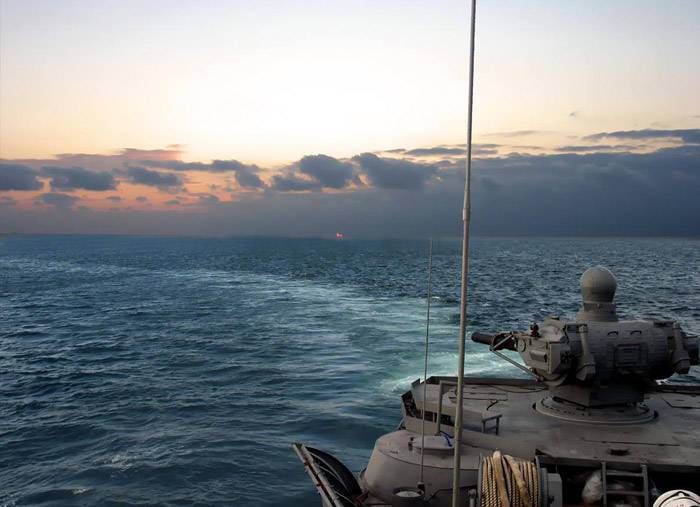
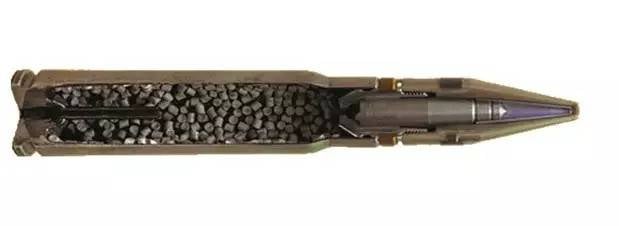
Since we are talking about such serious things, you need to remember the mighty “Goalkeeper”. The Dutch system has received particular recognition worldwide.
The artillery unit of the “Goalkeeper” is represented by a 30-mm GAU-8 seven-barreled cannon, similar to the anti-tank gun of the A-10 attack aircraft. The relatively large mass (approx. 10 tons) and not the highest rate of fire (4200 rds / min) are entirely compensated by the power of the shells. Subcaliber 30x173 mm MPDS with a 21 mm tungsten core, according to calculations, is capable of guaranteed to cause detonation of the warhead of the anti-ship missiles.
According to the data presented, the capabilities of the “Goalkeeper” allow in 5,5 seconds to crack down on a two-swing missile, similar to the Moskit anti-ship missile. Detection and escort at a distance of several miles, the opening of aimed fire at a missile approaching 1500 m, with complete destruction at a distance of 300 m from the ship.
300 meters. However, if the warhead does not undermine, the Dutch, by all accounts, expect bad consequences.
The wreckage of a 2-fly missile will pierce through any destroyer!
It remains to be added that, taking into account the similar caliber and ballistics (1100 m / s), the Russian-made Broadsword sub-caliber shells also have the likelihood of initiating the RCC warhead close to 1,0. The subsonic speed of all, without exception, NATO anti-ship means in this context simplifies the conditions of the duel.
AK-630 and AK-630M-2 “Duet”, “Dirk”, “Broadsword”, foreign “Goalkeeper” and “Falanks”.
Over the past 40-50 years, the idea of shooting anti-ship missiles with quick-firing guns was considered an obvious solution for all fleets in the world.
Oerlikon went the furthest, introducing the Millennium anti-aircraft gun, using 35 mm programmable shells. An intelligent approach instead of the brute power of the “metal cutting”.
In the author’s personal opinion, high technologies are useless in this case. As the above examples testify, even direct hits by "land mines" can not lead an offensive missile off course. How will close gaps “scratching” the target with small fragments be useful?
To play according to the traditional rules, the Millennium is prevented by an overly complex construction. The outstanding ballistics and the presence of “conventional” BPS in the ammunition depreciate completely at a low rate of fire (only 200-1000 rds / min) and a small ammunition load (252 shots). In its insolence, this is never a Broadsword. And not even the AK-630 of the mid-1960s.
"Millennium" appreciated the naval forces of Denmark, Indonesia and Venezuela. But something tells us that the Venezuelan Coast Guard sees another purpose for this system: shooting at boats and other surface targets.
Another well-known development in the field of anti-aircraft guns comes from Italy.
Developed in the 1970s. DARDO system adopted by 14 countries. In fact, it was an attempt to “squeeze” the latest opportunities from the Bofors submachine guns. The artillery unit consists of twin 40 mm caliber guns. With all due respect to the well-deserved Bofors, his time was up. The rate of fire of the latest modifications reaches 2x450 rds / min - an insignificant value in the fight against modern missiles. The high power of 0,9-kg shells in this case is not at all a comforting parameter.
The most common (23 countries, 400+ ships) remains the Phalanx anti-aircraft artillery. Which lacks stars from the sky, but contains fewer flaws than all other systems. With certain advantages.
The "phalanx" was originally designed on the same carriage with the guidance system, to simplify calibration and reduce errors when shooting. General Dynamics designers understood the importance of speed drives: the machine is capable of sending a block of barrels from the horizon to the zenith in less than a second. It is relatively simple and compact, does not contain controversial "innovations" and elusive records. The impression is spoiled by the relatively small caliber and low power of 20 mm ammunition, however, the creators of the complex are more likely to hope for the effect produced by shells with a uranium core.
All of these developments are united by one:
Inability to use in real combat conditions.
Due to the extreme lack of time and high missile speeds, the advantages of ZAK can only be realized in automatic mode. The system should independently search for targets and open fire to defeat. She has no time to ask for confirmation.
The threat is not created by the notorious “insurrection of machines”, but, on the contrary, by the imperfection of electronic brains. The program has restrictions on the speed range and sizes of possible targets, but it is impossible to predict what decision the computer will make. And this is not just a program bug. This is 70 rounds per second.
He is dangerous.
Eyewitnesses who saw the “Phalanx” near speak of a depressing impression during the operation of the installation. The complex is constantly buzzing with drives and aims somewhere in the sky. What he sees there, no one has time to understand. “Phalanx” is already pointing at the next object, which, in his opinion, is capable of posing a threat.
In 1996, the anti-aircraft machine of the Japanese destroyer Yubari was shredded by the Intruder attack aircraft flying near it.
Another time, the Phalanx, mounted on board the El Paso weapons transport, after firing at an aerial target, transferred fire to the Iwo Jima helicopter carrier, killing those on the bridge.
On a hot February night in 1991, the anti-aircraft gun frigate "Jerrett" tried to intercept the anti-ship missiles issued by the enemy. Instead of Iraqi missiles, he "planted" on Iowa.
By the way, those missiles were intercepted by a British destroyer with the help of air defense systems.
ZAK are not used in practice. Their work is demonstrated in ideal conditions of marine ranges. In the absence of near all living and nonliving, except for the target itself. After successful firing, they turn him off and forget about his existence.
How to use it in combat conditions? Desperate times require desperate decisions.
Everyone understands that the anti-aircraft means of escort ships can properly “thin out” the air group of their own aircraft carrier. Or arrange a powerful exchange of volleys between the forces of the connection. Otherwise, there is a risk of missed missile attack. Choosing the worst of two evils.
The problem is that combat conditions come too suddenly.
The crew of the Israeli corvette Khanit clearly forgot about the presence of the Phalanx on board. Patrolling along the coast of Lebanon, the corvette was suddenly hit by an anti-ship missile (2006).
Of course, ZAC was inactive at that moment. As already noted, the continuous operation of the Phalanx carries unjustified risks. An automatic anti-aircraft gun will sooner or later be riddled with a liner landing at Beirut Airport.
None of the military is ready to bear responsibility for a possible tragedy. Therefore, in peacetime and wartime, the fleet will do without the “Phalanx”.
Is it any wonder that during the missile attack in the Persian Gulf the ZAK frigate “Stark” was in the “manual control” mode. Simply put, it has been disabled. Without the ability to use the combat potential inherent in it.
How the ZAK installed at the stern could intercept the missile at the course angles, this is another matter. We will talk about a couple of paragraphs below about why the frigate’s project included only one Phalanx.
A self-propelled anti-aircraft gun is similar to a pistol stored in a safe. In the event of a threat, there is no time to get it. And walking with such a gun is inconvenient, because there is no fuse. And in general, he shoots at an arbitrary point in time.
The following thesis could be a good introduction to the article or its epilogue. In practice, explicit parameters are not so important weapons (faster / higher / stronger), how many of its invisible features in the context of the organization of military service.
What happens if a weapon is a source of ongoing emergency?
All officers - from the very top and down the chain of command, will by any means avoid the handling of such weapons in their units. No one wants to risk shoulder straps. Ultimately, at the time of the threat, everyone will forget about him.
It seems that this is exactly what is happening with the naval anti-aircraft complexes of close defense.
The damaged Stark, which belonged to the Oliver Perry type, was equipped with the only ZAK covering the stern corners. The reason was the savings in the construction of frigates, which were created for patrol tasks in peacetime. And were under the reliable protection of their national flag. All more or less serious rivals, understanding the consequences, bypassed the American frigate.
Other ships, which formed the basis of the naval forces, always had a closed loop of near air defense. Which consisted of 2-4 automatic anti-aircraft guns.
Anti-aircraft guns were installed without exception on all combat and auxiliary ships, including boats, transports and integrated supply ships. Cheap and cheerful with fairly high combat capabilities.
This continued until the end of the 1990s, when a systematic rejection of near-defense complexes was outlined. Starting from the 35th Corps, all Burke destroyers lost the bow of the Phalanx.
French and Italian Horizons do not have ZAC at all. Just don't talk about Sadral / Simbad / Mistral. A single launcher with six short-range missiles will provide protection against anti-ship missiles from any direction? With any massive attack? No, this is just a decoration.
Another well-known class of frigates (FREMM) is also devoid of ZAC. The Narwhal and Erilikon KBA cannon launchers are anti-terrorism weapons. They are not suitable for intercepting high-speed means of air attack.
Frigates of the Northwest Group (Iver Hütfeld, De Zeven Provinsien) retained the rudiment in the form of a lone Goalkeeper or Erlikon Millennium in the aft part of the superstructure. One, just one.
Finally, Zamvolt. The destroyer of the future was never planned to arm ZAK. According to the project, they promised a pair of 57-mm Bofors universal cannons for protection against threats in the near zone. At a rate of fire of about 200 rounds / min, such guns are difficult to consider as anti-ballistic missiles.
In reality, the destroyer received a 30mm GDLS with a futuristic design, which is not bad for firing at fishing boats. With the known power of 30-mm ammunition and the rate of fire 50 times lower than that of the Broadsword, they are not designed for more.
It is possible to enumerate various projects and solutions of designers for a long time. But, in my opinion, the conclusion is already quite obvious.
Contrary to popular belief about the importance of "active defense" in modern warfare at sea, in practice the exact opposite is observed.
Most Navy to date have excluded layered defense from consideration, assigning all the air defense / missile defense tasks to long-range anti-aircraft systems and electronic warfare systems. The latter deserve the highest praise, but every weapon has its limit and the probability of interception. Missing rockets in the near zone will not be shot down.
I admit, some time ago it seemed absurd to the author. ZAK stand mere pennies in comparison with other weapons aboard the first-ranking unit, significantly increasing its chances of surviving a missile attack. But there seems to be a serious reason for rejection.
ZAK are useless because of the fears of sailors to make trouble for themselves.
There are a number of fleets where they still adhere to the traditional point of view. Each Japanese destroyer is necessarily equipped with two Phalanxes. (Probably to surely interrupt the deck Aviation American allies.)
The Chinese are increasing the idea of “Goalkeeper” in an increasing way, introducing in the recent past the 11-barrel Type 1130 anti-aircraft gun, making 11 rounds per minute. This is blasphemy. First of all, due to problems with overheating. If the Chinese Navy is so hungry for fire density, it is much more logical to consider an increase in the number of installations themselves. With a more compact and simple design, placed on the sponsors of the add-on under the rhombus scheme.
Which point of view adheres to the Russian Navy
One glance at the new and under construction frigates of the Navy is enough to see: Russian ships in no way give up the near line of defense.
On the other hand, the trend is obvious: short-range automatic anti-aircraft guns are gradually losing priority. On frigates of pr. 11356 (the head "Admiral Grigorovich") anti-aircraft batteries AK-630 have a reduced composition - one installation on each side. The data for firing are centrally generated using the Positive radar.
Frigates 22350 (the leading Admiral Gorshkov) are the carriers of the most powerful weapons for intercepting anti-ship missiles and strategic offensive arms in the near zone among all European and American ships. The sides of the frigate are covered with "Broadswords". Which, as mentioned above, hardly have equal rivals among the means of a similar purpose.
The Broadsword was created as a ZRAK with combined missile-cannon weapons, but its missiles are present only in the form of 3D models. Short-range missiles in this situation were considered unnecessary. A sober calculation with an eye on international experience or another result of “budget optimization”? This is a subject for evaluation by knowledgeable experts.
How “active defense” is organized at distant approaches, air defense systems and electronic warfare systems and their capabilities will be discussed in the next article.
Looking ahead, I will express seditious thought. Not a single modern surface ship, either singly or as part of a compound, can withstand the list of anti-ship means that have been created over the past decades.
What war are ships preparing for?
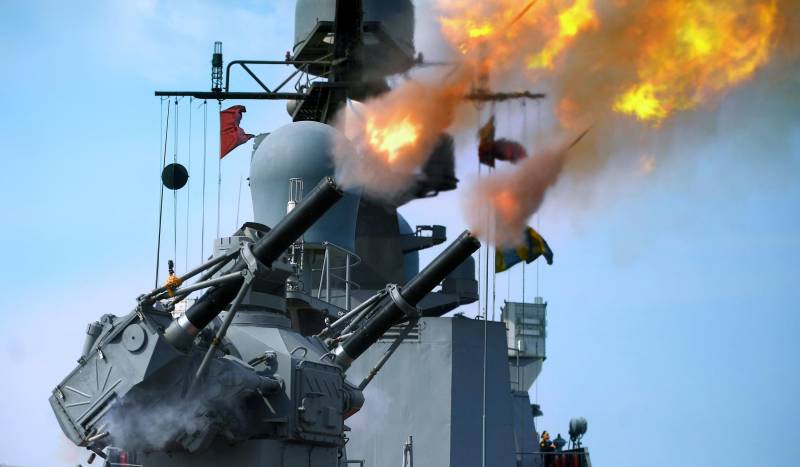
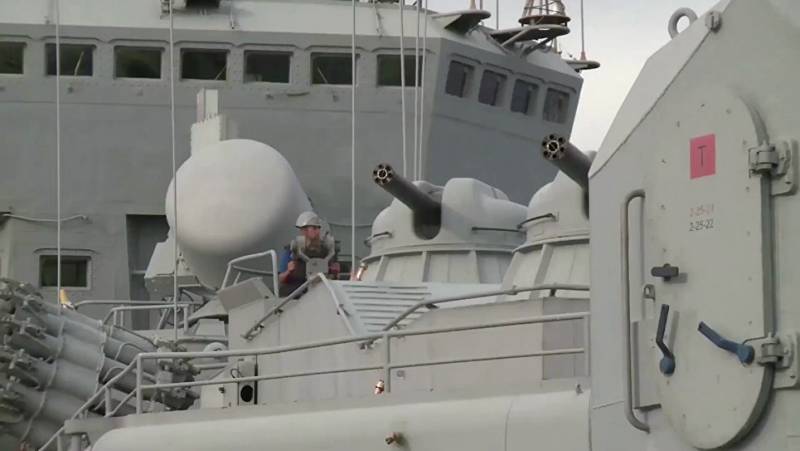
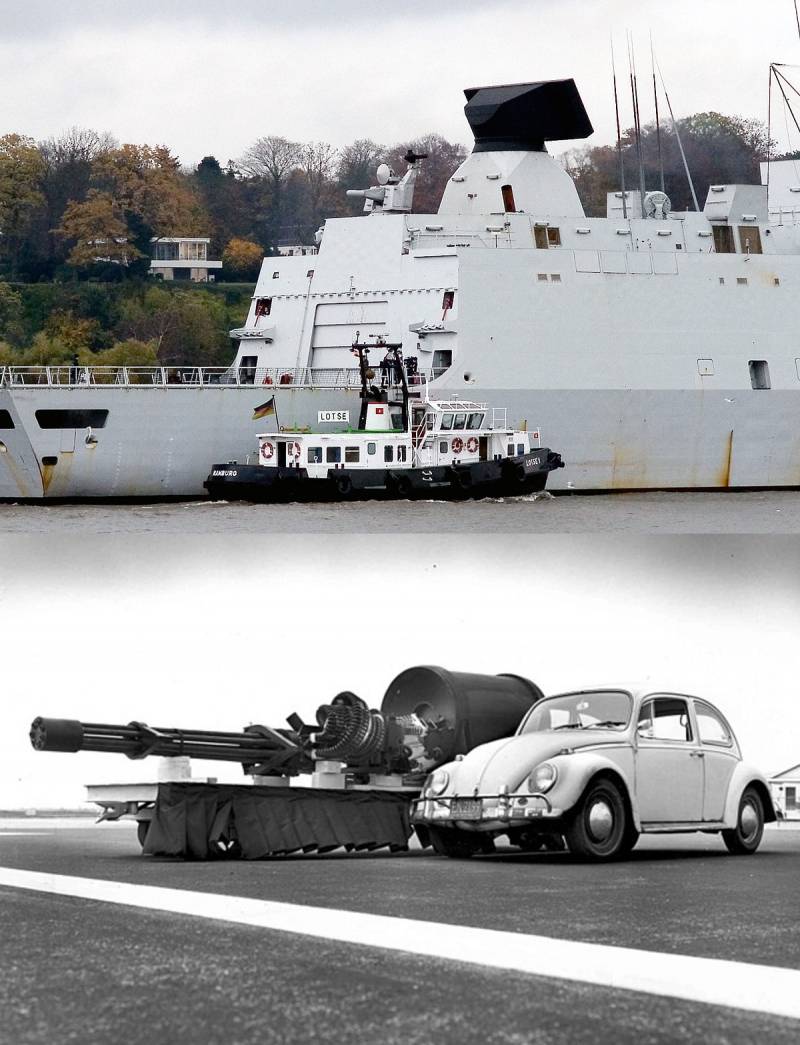
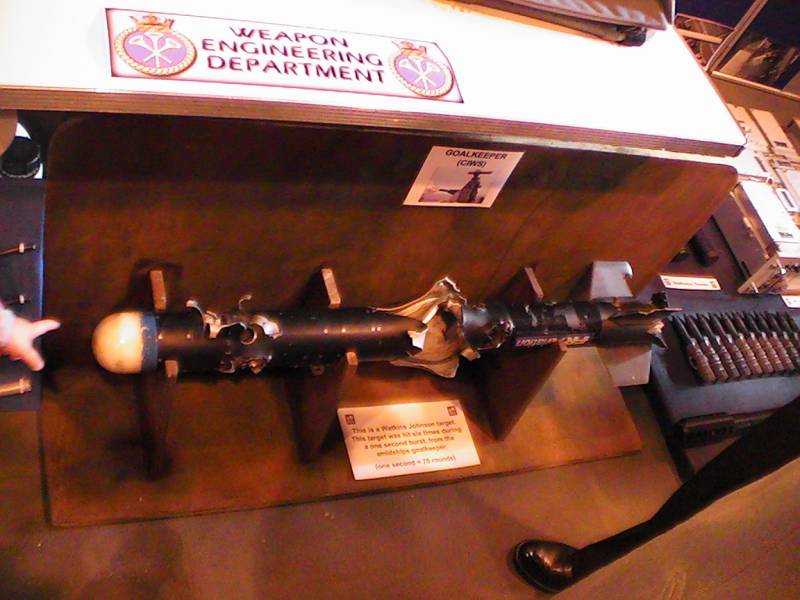
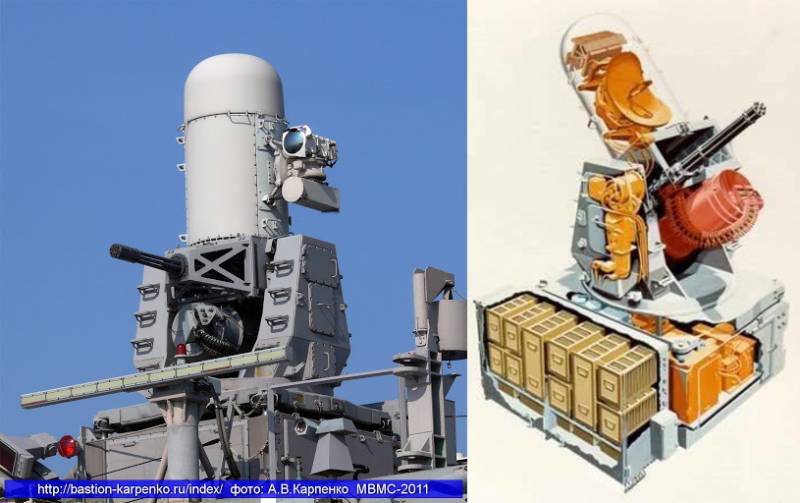
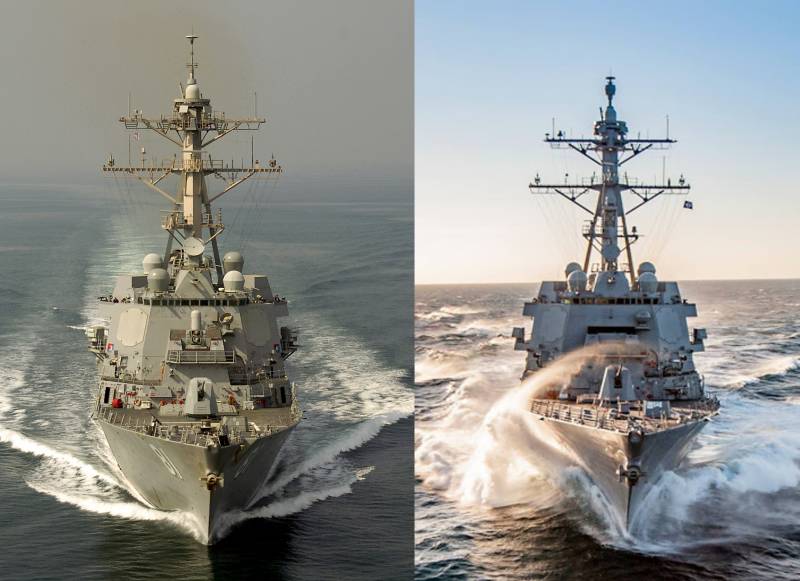
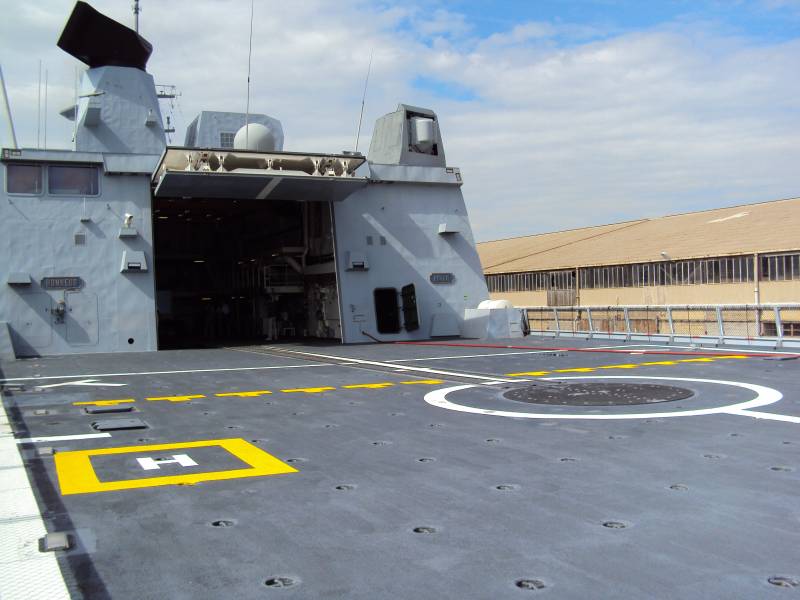
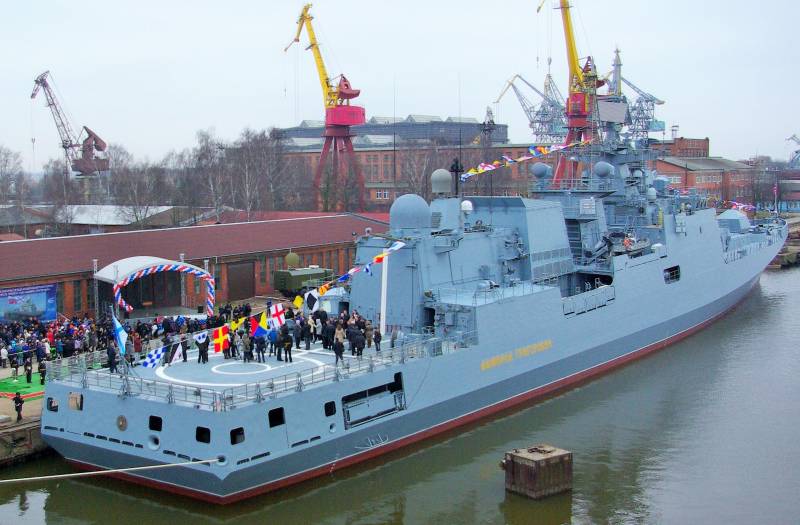
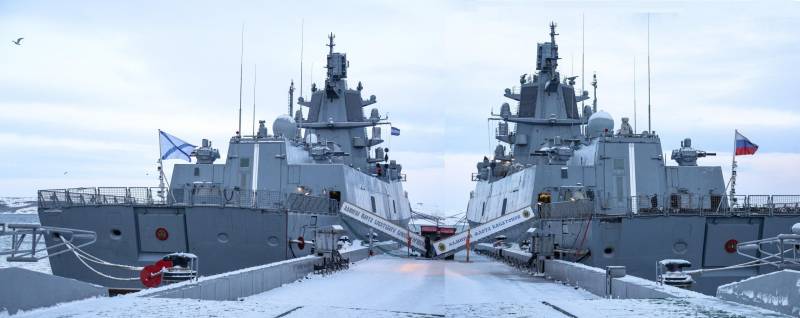
Information